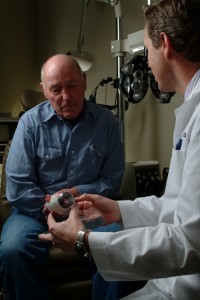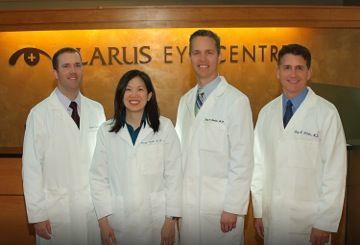Submitted by Clarus Eye Centre

Since its inception in the 1990s, LASIK (laser in-situ keratomileusis) has successfully given millions of people excellent vision without glasses. However, as with any surgery, early complications created a public awareness that LASIK is, in fact, surgery. Despite the high satisfaction rate, there were patients who suffered from disabling night-time glare, dry eyes, and poor vision that required the on-going — and for some, unexpected — use of glasses or contacts.
Fortunately for all of us, surgeons and industry leaders have made remarkable improvements to the procedure to help reduce the risks and improve the quality of vision following surgery. I will describe some of these changes below:
- Improved Treatment Algorithms – The initial treatment programs used very small treatment “zones.” As the patient’s pupil dilated outside the area of treatment, they would experience significant glare at night. Current treatment algorithms have enlarged the treatment zones. In addition, current Wavefront Guided or Wavefront Optimized treatments are customized for each patient, reducing undesirable side effects and improving night vision.
- It is important to have Wavefront Guided or Wavefront Optimized treatments to ensure the best outcomes.
- Safer Flap Creation – LASIK surgery starts with the creation of a flap of tissue on the surface of the cornea (front window of the eye). The initial flap-makers used an oscillating blade that cut the flaps of a desired depth. Unfortunately, the devices were not terribly accurate, leading to flaps that were too thick, too thin or even incomplete. Now we use a femtosecond laser to create the flaps. With this technology, the accuracy of the flap depth is excellent and the risk of incomplete/partial flaps has nearly been eliminated. We have been using laser-only LASIK exclusively for the past six years.
-
- It is important to have blade-free, all-laser LASIK with a femtosecond laser to help reduce the risks associated with the creation of the flap. While it does not eliminate flap risks, it is a much safer procedure.
Overall, LASIK is a very successful procedure that will reduce your need for glasses. It can treat high levels of nearsightedness, farsightedness and astigmatism. However, the procedure is not for everyone. It is very important that you have a thorough evaluation by your surgeon to make sure the procedure is right for you.
Contact our office today to schedule a free screening with our refractive coordinator, Craig Shoulders. Freedom from glasses is just a phone call away.


















































